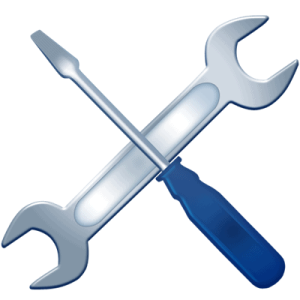Bucket List for A Well-Maintained Bucket
The summer season may be over, but if you plan to use your machine this winter, a well-maintained bucket remains a top priority. Of course, you’ll want to be sure the machine itself is winter-ready, but the bucket is the business end of the machine. Whether you’ll be moving snow or continuing with earth-moving or other scoop-and-load work, two factors will drive your productivity and cost-effective operation.
- Choose the right accessories for your bucket
Bucket edges come in smooth blade, weld-on teeth, tooth bar, and serrated edge configurations. Each is designed for a different type of work, and some are more appropriate for winter work:
 A bolt-on blade works well for pushing or scooping snow. Its straight edge is beveled on both sides, so when one side is worn you can simply flip it over and wait to replace it till the second side is also worn. Experts warn against trying to reuse the bolts when it’s time to reverse the bolt-on edge because the threads will be too worn. Cut them off instead, and use new ones.
A bolt-on blade works well for pushing or scooping snow. Its straight edge is beveled on both sides, so when one side is worn you can simply flip it over and wait to replace it till the second side is also worn. Experts warn against trying to reuse the bolts when it’s time to reverse the bolt-on edge because the threads will be too worn. Cut them off instead, and use new ones.- Weld-on teeth are not recommended for working in snow or ice because the teeth hamper productivity and are likely to become damaged. In other conditions, weld-on teeth are valuable because they protect the cutting edge. Pin-on teeth are less prone to failure and easier to change than crimp-on teeth. The most important thing to remember with this type of edge is not to operate it if any teeth are missing. This will damage the shank, making later tooth replacement difficult or impossible. It’s far cheaper to maintain a back-up supply of teeth.
- A tooth bar, on the other hand, is a more versatile accessory because it can be removed for working with snow and ice.
- If your winter work will require breaking up frozen ground, a serrated-edge bucket blade can be a great choice, particularly since it will protect the lip while working. It’s also removable for warm-weather jobs where you don’t require its cutting properties.
- Preventive maintenance tips
Just as you regularly inspect the loader for wear or damage, it is essential to visually inspect the bucket. Be on the lookout for stress fractures, cracks, or undue wear on metal components and check hydraulics for loose or cracked hoses and dirt or debris that has built up around the hydraulic fittings. Fixing small problems now will save you money and grief later on.
 Pay special attention to the bucket coupler. Look for built-up mud or debris, especially in the pinholes at the bottom. Dirt causes excessive wear over time, and it can obscure early signs of other damage. Check the connection for cracks or overly-loose fit. If welding won’t fix the problem, it’s probably time to replace the bucket.
Pay special attention to the bucket coupler. Look for built-up mud or debris, especially in the pinholes at the bottom. Dirt causes excessive wear over time, and it can obscure early signs of other damage. Check the connection for cracks or overly-loose fit. If welding won’t fix the problem, it’s probably time to replace the bucket.
Proper operation is a form of preventive maintenance, too. Regardless of what season or conditions you’re working in, your machine and its bucket will perform better and last longer if you remember to:
- Find the “sweet spot” for grading pressure – not too much, or the work will be harder and the bucket edge will wear faster. When back-dragging, excessive pressure can damage the cutting edge. If the loader has a float function, engage it to relieve pressure on the bucket and arms.
- Take your time. Efficiency is good, but trying to get the work done too quickly causes excessive wear and could cause an accident, too. That goes for travel as well as scooping and loading.
If you expect to earn good revenue this winter, the last thing you need is an unexpected breakdown. By choosing the right bucket accessories and following these maintenance tips, you can look forward to loading with confidence.

